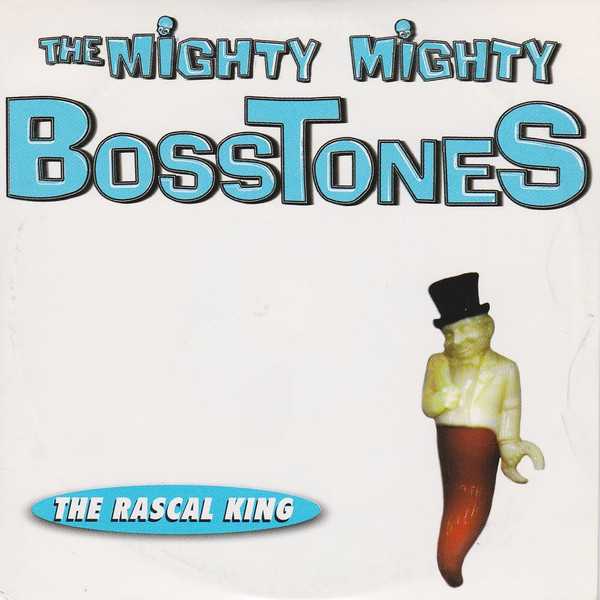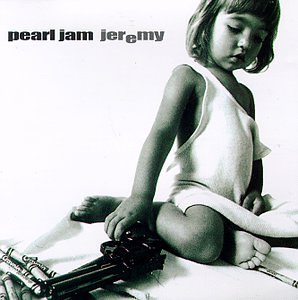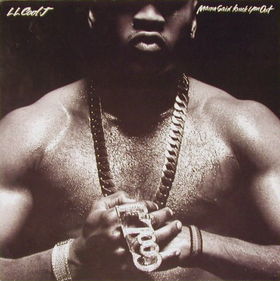 When Third Eye Blind released their debut single “Semi-Charmed Life” in 1997, it didn’t just climb the charts—it defined an era. Bursting with infectious hooks, glittering guitar riffs, and a sunny, singalong chorus, the song seemed tailor-made for late-1990s pop radio. Yet beneath that bright surface lurked a narrative about addiction, loss, and the dizzying highs and lows of life on the edge. This striking contrast—between euphoric sound and unsettling subject matter—made “Semi-Charmed Life” one of the most intriguing hits of its time. More than two decades later, it remains a quintessential slice of 1990s alternative rock, beloved by fans and still played on radio stations and playlists across the world.
When Third Eye Blind released their debut single “Semi-Charmed Life” in 1997, it didn’t just climb the charts—it defined an era. Bursting with infectious hooks, glittering guitar riffs, and a sunny, singalong chorus, the song seemed tailor-made for late-1990s pop radio. Yet beneath that bright surface lurked a narrative about addiction, loss, and the dizzying highs and lows of life on the edge. This striking contrast—between euphoric sound and unsettling subject matter—made “Semi-Charmed Life” one of the most intriguing hits of its time. More than two decades later, it remains a quintessential slice of 1990s alternative rock, beloved by fans and still played on radio stations and playlists across the world.
To understand the lasting appeal of “Semi-Charmed Life,” we have to explore its creation, its hidden lyrical depths, the cultural backdrop of the late 1990s, and how this irresistible single helped launch Third Eye Blind into the mainstream.
The Late 1990s: A Pop-Rock Crossroads
The mid-to-late 1990s were a transitional period in popular music. The grunge explosion of the early part of the decade had receded following the deaths of Kurt Cobain and other seismic shifts in the alternative scene. In its place emerged a more polished, radio-friendly form of alternative rock—bands like Matchbox Twenty, Sugar Ray, Goo Goo Dolls, and Smash Mouth blended crunchy guitars with catchy choruses, creating a sound that appealed to both rock fans and pop audiences.
Third Eye Blind arrived squarely in this landscape. Fronted by Stephan Jenkins, the San Francisco-based band fused jangly guitar textures with sharp pop sensibilities, delivering a sound that felt both edgy and accessible. Their self-titled debut album, released in April 1997, would become one of the defining records of the decade, and “Semi-Charmed Life” was its explosive calling card.
The Song’s Creation: Chasing the Rush
“Semi-Charmed Life” was written by Stephan Jenkins and guitarist Kevin Cadogan, and from the start it was meant to capture the intoxicating energy of San Francisco’s nightlife scene. Jenkins has described the song as a reflection of the highs and lows of life in the city—moments of pure joy mixed with the darker realities of addiction and emotional emptiness.
Musically, the track is built around a sparkling guitar riff that instantly grabs the listener. Cadogan’s bright, chiming chords and Tony Fredianelli’s percussive strumming create a relentless forward momentum, while the rhythm section locks into a buoyant groove. The result is a sound that feels almost impossibly upbeat, a sonic sugar rush that mirrors the rush of the substances Jenkins sings about.
The vocal delivery is equally distinctive. Jenkins delivers the verses in a rapid-fire, half-spoken cadence, almost like a rap, before soaring into a euphoric chorus that begs to be sung at the top of one’s lungs. The contrast between the talk-sung verses and the melodic hook gives the song a unique dynamic, keeping listeners hooked from start to finish.
Lyrics: Darkness Behind the Sunshine
At first listen, “Semi-Charmed Life” sounds like a carefree anthem of youthful exuberance. The chorus—“I want something else to get me through this / Semi-charmed kind of life, baby, baby”—feels like a celebration of fun and adventure. But a closer look at the lyrics reveals a much darker narrative.
The song is, quite explicitly, about crystal meth addiction. Lines like “doing crystal meth will lift you up until you break” and references to “bumping” and “ticking” are thinly veiled descriptions of drug use and its dangerous highs. Jenkins cleverly wrapped these references in a relentlessly upbeat melody, a deliberate choice meant to reflect the seductive pull of the drug and the duality of pleasure and destruction.
In interviews, Jenkins has explained that the song is about the search for something more—something else—to fill the emptiness of life. The “semi-charmed” existence is one where pleasure and pain coexist, where the pursuit of euphoria masks a deeper dissatisfaction. It’s a commentary on the fleeting nature of happiness and the ways people try to escape their own realities.
This lyrical complexity is a big part of the song’s enduring appeal. Many listeners who sang along to the infectious chorus as teenagers later discovered the darker meaning as adults, adding new layers of understanding to a song they thought they knew.
Chart Success and Critical Acclaim
Released as the lead single from Third Eye Blind in early 1997, “Semi-Charmed Life” became an immediate hit. It peaked at No. 4 on the Billboard Hot 100 and spent an impressive 43 weeks on the chart, a testament to its crossover appeal. It also topped the Modern Rock Tracks chart and earned heavy rotation on MTV, where its colorful, sun-drenched music video perfectly matched the song’s upbeat vibe.
Critics praised the track for its clever juxtaposition of bright pop hooks and dark subject matter. While some radio stations edited out the more explicit drug references, the song’s infectious energy ensured it remained a fixture on playlists throughout the summer of 1997 and beyond.
The success of “Semi-Charmed Life” helped propel Third Eye Blind’s debut album to multi-platinum status. The record eventually sold over six million copies in the United States alone, establishing the band as one of the most successful alternative acts of the late 1990s.
The Sound of a Generation
Part of what made “Semi-Charmed Life” resonate so deeply was its ability to capture the mood of the times. The late 1990s were marked by economic optimism, technological innovation, and a sense of youthful possibility. Yet beneath the surface lurked anxieties about identity, addiction, and the fleeting nature of happiness. The song’s combination of sunny melodies and dark lyrics perfectly reflected this duality.
For many listeners, “Semi-Charmed Life” became the soundtrack to carefree summers, road trips, and college parties. Its chorus was tailor-made for singalongs, and its infectious energy made it a staple of radio and mixtapes. Yet for others, the song’s darker themes offered a mirror to their own struggles, providing comfort and understanding beneath the glossy surface.
Musical Craftsmanship: Hooks on Hooks
Beyond its lyrical complexity, “Semi-Charmed Life” is a masterclass in pop songwriting. The song’s structure is packed with hooks: the iconic guitar riff, the rapid-fire verses, the soaring chorus, and the wordless “doo-doo-doo” refrain that has become instantly recognizable. Each section flows seamlessly into the next, creating a sense of constant motion and excitement.
The production, handled by Jenkins and Eric Valentine, strikes a perfect balance between polish and grit. The guitars shimmer without sounding sterile, the drums punch through the mix, and Jenkins’ vocals sit front and center, delivering every line with a mix of charm and urgency. It’s a sound that manages to feel both timeless and distinctly 1997.
A Legacy That Endures
More than two decades after its release, “Semi-Charmed Life” remains a staple of alternative and pop playlists. It continues to receive heavy rotation on 1990s nostalgia stations and streaming services, and it frequently appears in movies, TV shows, and commercials. Its ability to make people sing and dance—while also rewarding deeper analysis—has ensured its place in the cultural canon.
The song’s influence can also be heard in the work of later bands that blend upbeat melodies with introspective lyrics. Artists in the 2000s indie and pop-rock scenes, from Fall Out Boy to Panic! at the Disco, have cited Third Eye Blind as an influence, and “Semi-Charmed Life” stands as a prime example of how to make music that is both catchy and meaningful.
Third Eye Blind After “Semi-Charmed Life”
While “Semi-Charmed Life” remains Third Eye Blind’s signature song, the band proved they were far from a one-hit wonder. Their debut album produced several other successful singles, including “Jumper,” “Graduate,” and “How’s It Going to Be,” each showcasing different facets of their sound. Over the years, the band has continued to release music and tour, maintaining a dedicated fan base even as the musical landscape has shifted.
For many fans, however, “Semi-Charmed Life” remains the ultimate distillation of what makes Third Eye Blind special: infectious melodies, smart songwriting, and a willingness to explore the darker corners of human experience without losing sight of the joy of making music.
Cultural Afterlife: Movies, TV, and Memes
The song’s enduring popularity has also made it a frequent presence in pop culture. It has been featured in films like American Pie, Contact, and Wild Things, as well as TV shows such as Scrubs, Glee, and Parks and Recreation. Its instantly recognizable opening riff and “doo-doo-doo” refrain make it a perfect shorthand for 1990s nostalgia.
In recent years, “Semi-Charmed Life” has found a new audience through social media platforms like TikTok, where users create videos set to its upbeat hook. For younger listeners discovering the song for the first time, the contrast between its cheerful sound and dark lyrics continues to surprise and delight.
Why We Keep Coming Back
What makes “Semi-Charmed Life” so enduring is its ability to operate on multiple levels. For casual listeners, it’s an irresistible pop-rock anthem with one of the most infectious choruses of the 1990s. For those willing to dig deeper, it’s a poignant meditation on addiction, desire, and the search for meaning. Few songs manage to be this catchy while also carrying such emotional weight.
The phrase “semi-charmed” itself captures the essence of the song: a life that seems charmed on the surface but is haunted by something darker beneath. It’s a concept that remains as relevant today as it was in 1997, as people continue to navigate the tension between appearance and reality in an increasingly complex world.
Conclusion: A Timeless Pop Paradox
“Semi-Charmed Life” is more than just a 1990s hit—it’s a pop paradox, a song that wraps a story of addiction and existential longing in some of the most joyful melodies ever recorded. Third Eye Blind’s ability to balance these contrasts created a track that still feels fresh and vital decades later.
Every time that sparkling guitar riff kicks in and Stephan Jenkins launches into his rapid-fire verses, listeners are reminded of a moment in music when alternative rock embraced pop without losing its edge. Whether you first heard it blasting from a car radio in 1997 or discovered it on a streaming playlist last week, “Semi-Charmed Life” continues to offer something else—something deeper—beneath its shimmering surface.


